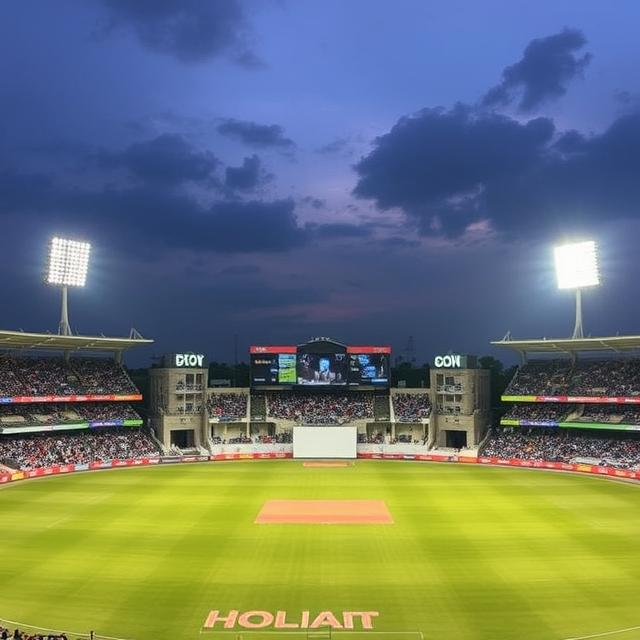Indian Media on Pakistan Cricket: A Complex and Often Contentious Relationship

Indian Media on Pakistan Cricket: A Complex and Often Contentious Relationship
Cricket, a national passion, often intertwines with political tensions. The Indian media’s portrayal of Pakistan cricket has been a complex tapestry, woven with threads of rivalry, admiration, and, undeniably, a healthy dose of controversy. This article delves into the multifaceted relationship, exploring the nuances and exploring how the media shapes public perception.
The history between India and Pakistan is steeped in political and social complexities. This translates directly into the media coverage of cricket matches. It’s not simply about the sport; it’s about national pride, historical baggage, and the broader geopolitical context.
Click here to learn about the key factors shaping the coverage and how it impacts the players themselves.
The Spectrum of Coverage: From Adulation to Scathing Criticism
The Indian media’s coverage of Pakistan cricket isn’t monolithic. It ranges from respectful admiration for individual players’ skills to highly critical analyses of alleged match-fixing and team ethics. The tone frequently shifts based on the outcome of the match, the performance of the players, and the prevailing political climate.
During a thrilling encounter, the focus often shifts from national rivalry to the sheer brilliance of the game. Analysis becomes more technical, focusing on the tactical prowess of players and the strategies employed by the coaching staff. In these moments, the media acts almost as a neutral observer, appreciating skill regardless of nationality.
However, when Pakistan faces a significant defeat, the narrative often shifts, and the focus falls onto alleged match-fixing, questionable decisions, and perceived underperformance. Sometimes, even genuine errors or bad luck are twisted into accusations, reinforcing the sense of rivalry and undermining Pakistani players’ integrity.
The Role of Political Factors: How National Sentiment Colors the Lens
The relationship between India and Pakistan extends beyond sport; it’s deeply rooted in history and fraught with political tension. This context significantly shapes the media coverage of cricket matches.
Political events often seep into the commentary and analysis. A border skirmish or a diplomatic standoff can easily translate into heightened scrutiny of Pakistani players’ performances, turning a sporting event into a platform for expressing national sentiment. This is a crucial aspect often overlooked in the coverage of the sport.
The media’s portrayal of Pakistani players can significantly vary based on the existing political atmosphere. Times of tension tend to exacerbate negative narratives, while periods of relative calm might see a more balanced approach. This interplay between sports coverage and political realities is undeniable.
The Impact on Players: Navigating the Pressure Cooker
The intense scrutiny of the Indian media can have a significant impact on Pakistani players. The pressure can be immense, particularly when their team faces a crucial match.
Their on-field performance is often judged not only on merit but also through the prism of the broader India-Pakistan relationship. This added layer of expectation can potentially affect players’ mental well-being and performance, creating a pressure cooker effect. Understanding these challenges is crucial to appreciating the players and their efforts.
Moreover, this intense media scrutiny can create a challenging environment for Pakistani players. The weight of expectations, especially considering the history between the two nations, can sometimes take a toll.
The Influence of Media Narratives on Public Perception
Beyond the individual players, the media’s portrayal of Pakistan cricket can shape the public’s perception of the entire team, their culture, and even their national identity.
This is particularly important to note because the public, in turn, can also affect the treatment of the players.
The media’s choice of words, framing of events, and selection of specific angles can create or reinforce certain stereotypes. A series of negative headlines can paint a picture of a team struggling or dishonest, impacting the way fans and even international media perceive their efforts.
This reinforcement of stereotypes through media coverage can significantly impact the broader perception of Pakistan cricket. The sustained nature of negative portrayals can potentially fuel biases and narrow viewpoints within the public domain.
The Search for a More Balanced Narrative
The discussion about the Indian media’s portrayal of Pakistani cricket must recognize the sensitivity of the subject. The potential for biased coverage is significant.
A more nuanced and balanced narrative is essential. Greater focus on the athleticism and skill of Pakistani players, irrespective of the outcome of the matches, would enrich the coverage. Analyzing the game objectively, devoid of political baggage, would undoubtedly contribute to a more fair and comprehensive portrayal of the sport.
There’s an urgent need to acknowledge and address potential biases within the media. Promoting a spirit of sportsmanship and respect, regardless of national allegiance, is essential for the overall growth of the sport. A more balanced presentation would contribute to a more engaging and insightful understanding of the rivalry and the athletes themselves.
The constant focus on the political context, while unavoidable, needs to be balanced with a focus on the individual performance and the intricacies of the sport. This shift in focus can create a more respectful and objective view of both the teams and the players involved. Only then can the media fully capture the essence of the game and its significance to the wider cricketing world.
In conclusion, the Indian media’s coverage of Pakistan cricket is a reflection of a complex relationship, influenced by political tensions and national pride. This article explores the diverse range of coverage, the influence of politics, the impact on players, and the potential for a more balanced perspective. By acknowledging these nuances, a more accurate and insightful understanding of this dynamic and engaging sporting narrative can emerge.